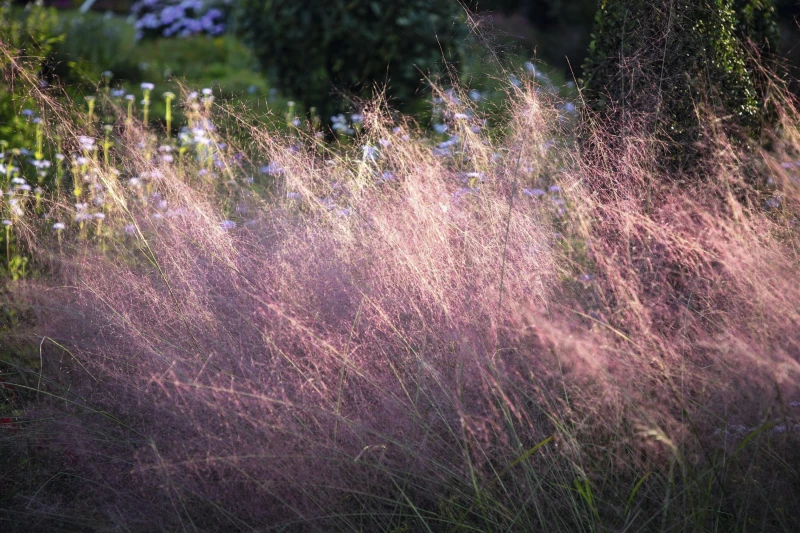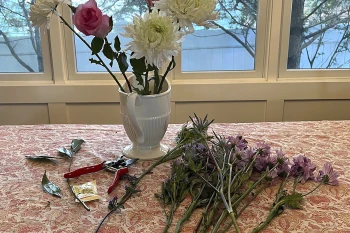Transforming a simple, low-cost bouquet into a stunning floral arrangement may seem like a daunting task, especially when your heart is set on giving someone a luxurious bouquet of flowers.
However, with a bit of imagination and creativity, you can create a beautiful arrangement that will leave a lasting impression. Jennifer Murphy, the owner of Forget Me Knots Custom Events and Floral Design in Floral Park, New York, offers some valuable tips on how to achieve this.
First and foremost, it is important to choose the right flowers for your arrangement. Murphy recommends selecting fragrant flowers like roses and lilies, as they will not only fill the room with their sweet aroma but also add a touch of elegance to your bouquet.
Once you have chosen your flowers, it is crucial to take proper care of them. Trim the stems at an angle, remove any leaves below the waterline, and place the flowers in a vase filled with water to hydrate them. These simple steps will give your flowers room to breathe and improve their longevity.
When it comes to arranging the bouquet, Murphy suggests starting with the tallest stems at the back and working your way forward, layering in shorter blooms towards the front for a balanced look.
Adding greenery to your arrangement will make it pop and give it a fuller appearance. You can use greenery from your garden or pick up some eucalyptus or fern leaves at the market.
Plants like dusty miller, ivy, myrtle, and viburnum make excellent bouquet greenery, as do herbs from your kitchen garden such as basil, mint, oregano, and sage.
Filler flowers are another essential component of a stunning floral arrangement. Baby’s breath and wax flowers are popular filler flowers that add depth and fill gaps between larger blooms.
You can also look for filler flowers in your garden, such as astilbe, chamomile, dianthus, lavender, and snapdragon, to name a few. These filler flowers will help enhance the overall look of your arrangement and give it a more polished appearance.
In conclusion, creating a beautiful floral arrangement does not have to break the bank. By following these tips from Jennifer Murphy, you can transform a simple bouquet into a stunning masterpiece that will impress anyone who receives it.
With a little creativity and attention to detail, you can show your loved ones how much you care without spending a fortune.
So next time your heart tells you to give someone flowers, remember that with a bit of effort, you can create a truly memorable gift that will be cherished for years to come.
The art of floral arrangement is a delicate dance between color, texture, and form. In this intricate world, where blooms vie for attention and colors play off one another in a symphony of beauty, one often-overlooked element stands out as a florist’s “secret weapon” – filler flowers.
Murphy, a seasoned expert in the field, underscores the paramount importance of these unassuming blossoms in creating stunning arrangements that captivate the eye and evoke emotions.
Filler flowers, such as the ethereal baby’s breath and the intricate wax flowers, play a pivotal role in floral design by adding depth and filling gaps within arrangements.
They act as the unsung heroes, seamlessly weaving between larger blooms to create a harmonious composition that is both visually appealing and structurally sound.
Murphy’s emphasis on the significance of these filler flowers sheds light on their transformative power in elevating a bouquet from ordinary to extraordinary.

But where does one find these elusive filler flowers that hold the key to floral perfection? Murphy suggests looking no further than one’s own garden, where a treasure trove of potential awaits.
Plants with stems that bear clusters of small flowers, such as astilbe, catmint, chamomile, dianthus, dill, goldenrod, heather, lady’s mantle, lavender, lily of the valley, Queen Anne’s lace, sea holly, snapdragon, sweet pea, yarrow, and verbena, offer a diverse palette of options for the discerning floral artist.
Moreover, Murphy advocates for creativity in the presentation of floral arrangements. Instead of relegating a bouquet to a mundane glass vase, she encourages enthusiasts to explore unconventional vessels like a charming pitcher or a vintage Mason jar.
By infusing personality and character into the choice of container, one can elevate the overall aesthetic of the arrangement, turning it into a work of art that speaks volumes about the creator’s style and taste.
However, one must not rush the creative process, cautions Murphy. Like any form of artistry, floral design requires patience, attention to detail, and a deep appreciation for the craft.
Each bloom, each filler flower, and each vessel must be carefully considered and placed with intention, allowing the arrangement to evolve organically into a masterpiece that transcends mere floral decoration.
In conclusion, Murphy’s insights into the importance of filler flowers, the art of foraging for botanical gems in one’s garden, and the significance of creative presentation underscore the multifaceted nature of floral design.
By embracing these principles and approaching floral arrangement as a form of artistic expression, one can unlock the true potential of flowers to inspire, uplift, and enchant both the creator and the beholder.
As Murphy aptly reminds us, in the world of floral design, there is no rushing the artistic process – only a journey of discovery and creativity waiting to unfold.
